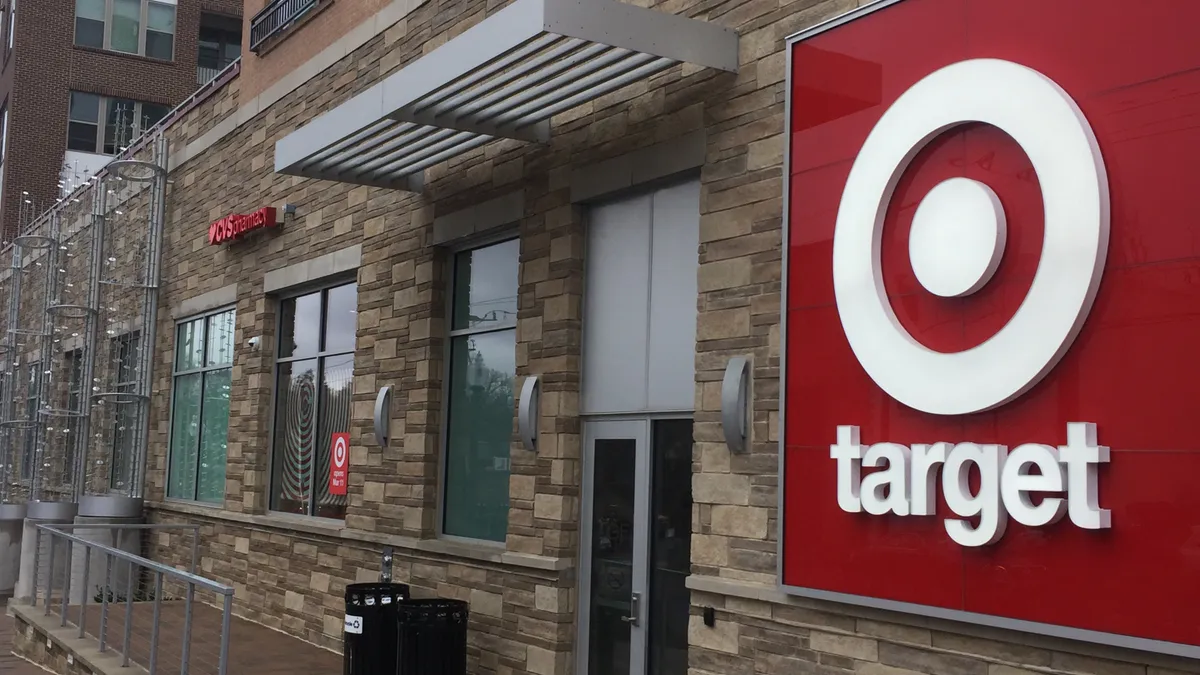Dive Brief:
- For Target, fulfillment is all about options as sales grow online and in stores, company executives said on a quarterly earnings conference call last week. Digital sales grew by 40% year-over-year and store comparable sales were up 5% for the second quarter.
- The sales bump is in part attributed to a "modern" fulfillment scheme that focuses on squeezing every bit of capacity possible out of the stores themselves, which CEO Brian Cornell described as, "placing our stores at the center of a modern network design to deliver an unmatched combination of convenient fulfillment options."
- The retailer has a clear focus on store remodels —both front and back of house — as a driver of sales, but in order to realize the 2% to 4% bump remodels can bring, the company has made investments to keep popular items in stock.
Dive Insight:
In the first half of 2018, Target was all about small changes with big impact. Though the line between stores and fulfillment centers is blurring across retail as e-commerce grows and consumers expect faster delivery times, Target has taken a modern view and the approach is paying off.
"Our strategic plan includes significant investments in the physical infrastructure of our stores. This is because our stores will continue to be the key fulfillment note for our guests whether that's a traditional store trip, a drive-up order, an in-store pickup order, a trip by a ship shopper or a traditional e-commerce purchase ship from a local Target store," said John Mulligan, Target's COO on the Aug. 22 call, according to Seeking Alpha's transcript.
To integrate order fulfillment and keep stores well-stocked while keeping control of labor costs, the company has been investing in the ability to send stores more customized shipments through what it calls "flow centers," with the goal of making labor as efficient as possible while reducing out of stock items.
"Our work on the upstream supply chain is focused on changes that will dramatically reduce store workload associated with unloading and restocking over the next two years," explained Mulligan.
He added that building up inventory for big shopping events like back-to-school earlier has served the stores well, but not all inventory stresses can be anticipated. Target's answer to Amazon's Prime Day, a one-day sale on the same day in July, created a better-than-expected reaction from consumers, which challenged the team.
"The sale created by far the biggest digital sales day we have ever experienced outside of a holiday season, driving volume nearly three times higher than our forecast. While this was great news, of course, our store and supply chain teams had to react and recover quickly to fulfill all the unplanned demand and keep operations running smoothly," said Mulligan.
On the back of sales growth and positive earnings announcements from Walmart, Nordstrom, Home Depot and others, Cornell was asked why retail seems to be writing a narrative of resurgence when e-commerce shows no signs of slowing down.
"Well-run retailers with strong balance sheets that generate cash that they can invest back into their business are winning right now," said Cornell.














